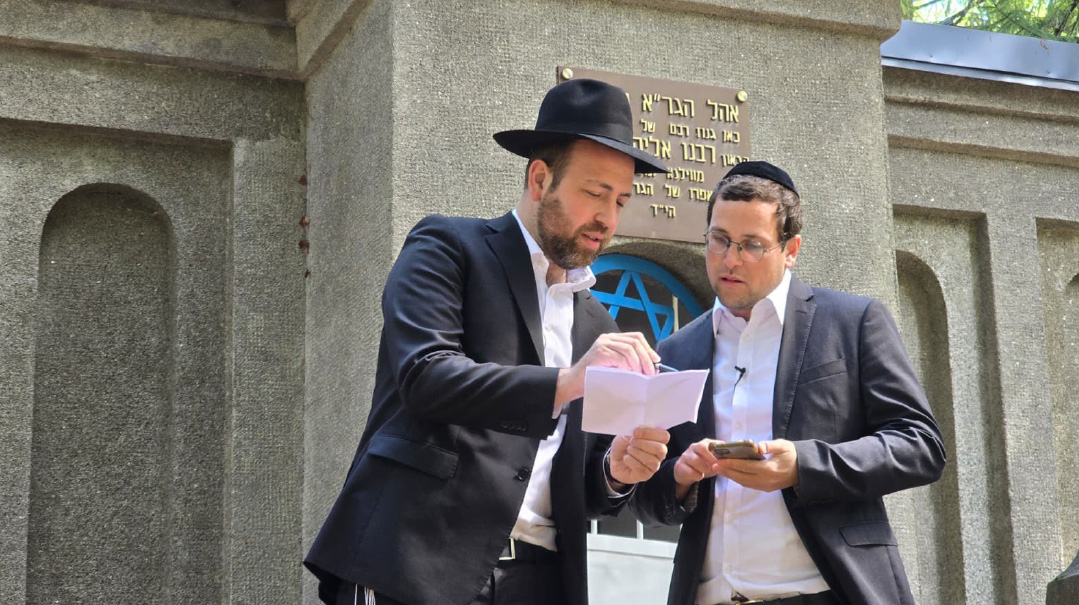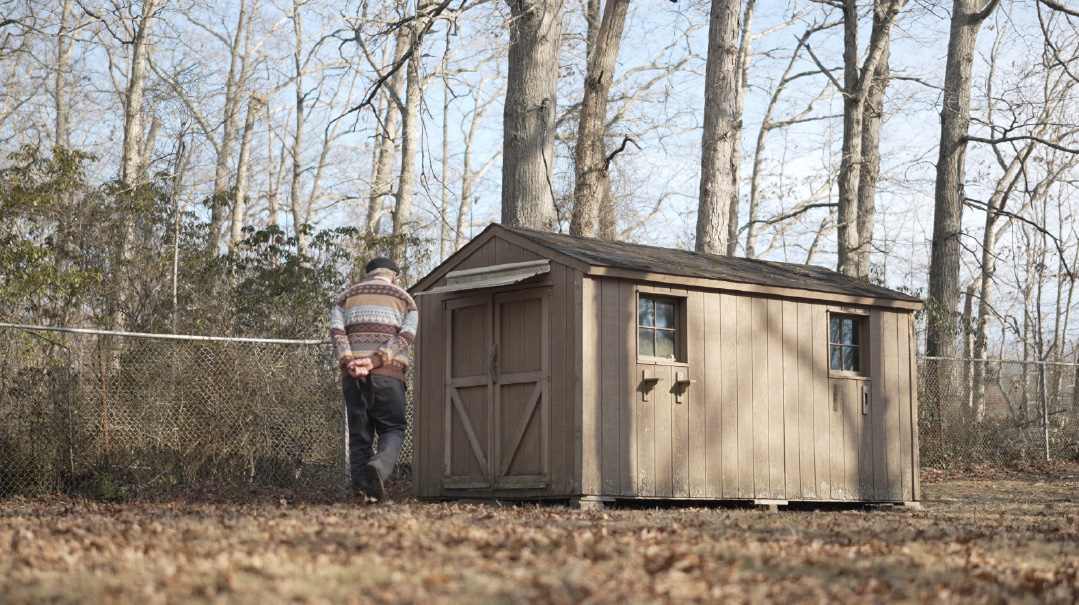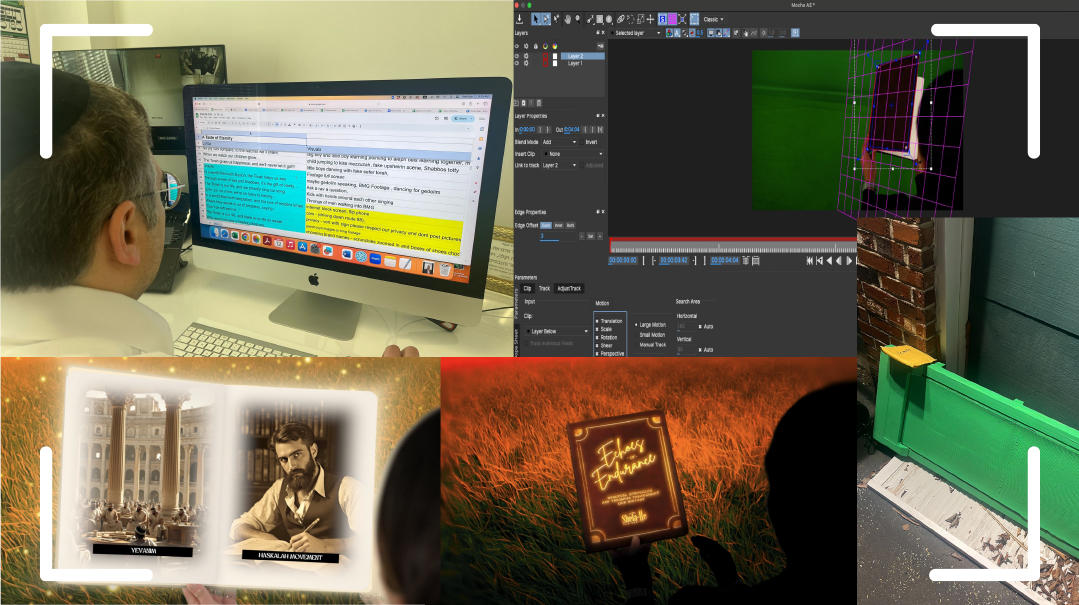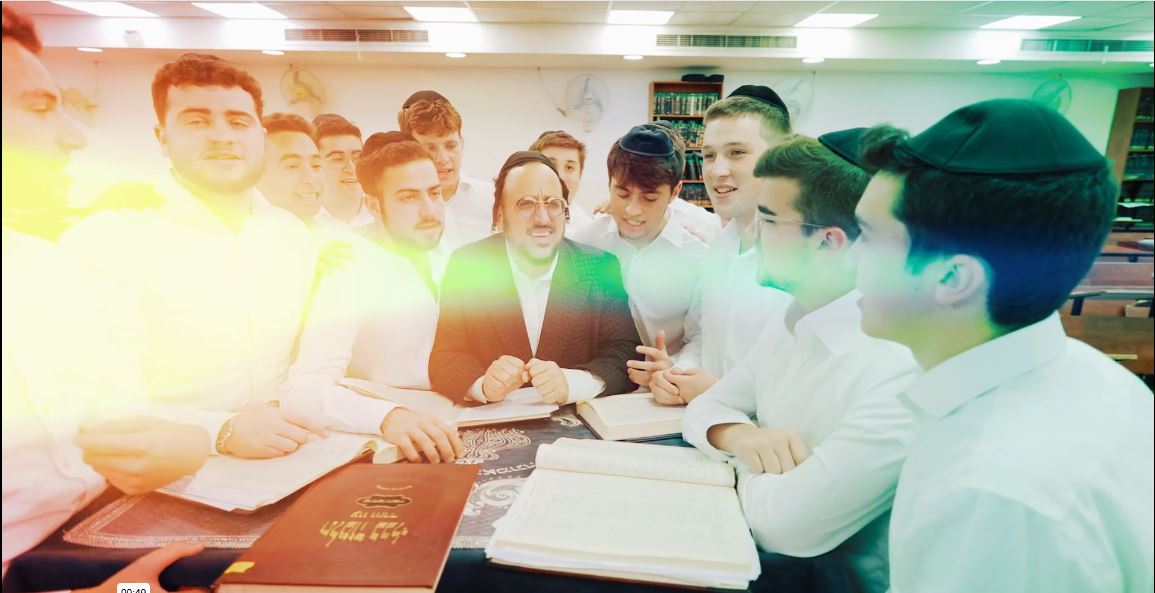Client: Living Kiddush Hashem Foundation
| September 5, 2023The plan was to play it on the first night of Selichos, Motzaei Shabbos, capitalizing on the extra time of those staying up late
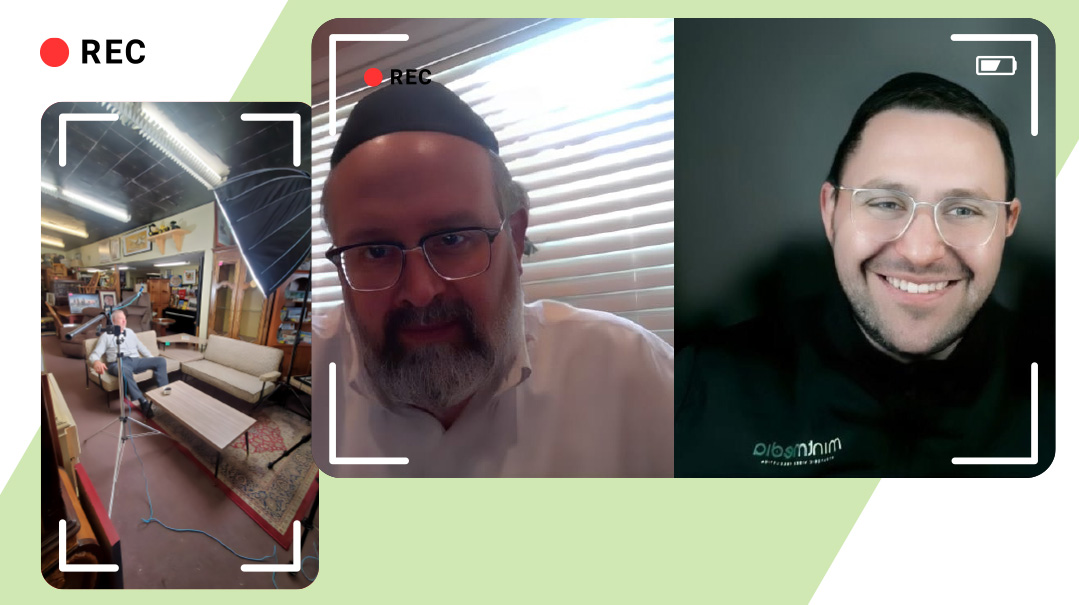
Client: Living Kiddush Hashem Foundation
Objective: Create a full-length feature video program
Film Locations: Denver, Colorado; Queens and Brooklyn, New York; and Orlando and Miami, Florida
Project Deadline: September 2023
The Proposal
Though our office is open on fast days, the pace, like our energy levels, is generally slower. But this past Shivah Asar B’Tammuz, I received an email from Rabbi Yaakov Giniger that pushed me into full gear. He was working as a marketing strategist for Living Kiddush Hashem, a movement to raise awareness of a Jew’s mission to be mekadesh Sheim Shamayim, and he wanted us to produce a full-length presentation for them.
On a Zoom meeting with Senior Production Manager Moshe Niehaus, Yaakov, and Rabbi Shraga Freedman, Living Kiddush Hashem’s educational director, Rabbi Freedman explained his vision: a 30- to 40-minute production highlighting the importance of kiddush Hashem. The plan was to play it on the first night of Selichos, Motzaei Shabbos, capitalizing on the extra time of those staying up late.
We discussed several possibilities for the content, and after a day or two, we sent a proposal for a full-length feature with a number of different elements: three five- to seven-minute reenactments of powerful kiddush Hashem stories followed by an inspirational music video. There would be a few speakers sharing words of chizuk in between segments, and a master of ceremonies pulling it all together into one cohesive production.

When all else failed, our resourceful crew took matters into their own hands, skillfully creating the contentious tattoo essential for our story’s authenticity
Pre-Production
Our first step was to pick the perfect stories to highlight. Rabbi Freedman sent us several options, and we reviewed them carefully, with an eye for what would be most impactful and visually exciting. For the first story, we decided to highlight an incident that happened in Denver in the late ’90s, in which a Jewish shopkeeper changed the trajectory of a neo-Nazi’s life simply by treating him kindly and fairly.
When we reached out to the storeowner, he told us he’d be happy to participate, but he was heading to Israel for an extended leave in two weeks so we’d have to do it before then. We immediately sprang into action, booking a flight that would get our cinematographer to Denver by Monday. The filming had to be done in the store, the backdrop of the story, but he requested that we come before opening hours to avoid disrupting the customers.
It’s About Time
Our videographer’s plan was to arrive in Colorado the night before, sleep a few hours in a hotel, and then start setting up at 8 a.m. for the 9 a.m. shoot.
Everything went according to plan as usual. Not quite.
Our cameraman WhatsApped me at midnight that he had landed in Denver, but his luggage had been left behind in Newark. For the standard traveler that can mean a frustrating morning shopping spree for a change of clothes, but for him it meant that he didn’t have the equipment he needed. Yes, he had his cameras with him, but his lights, tripods, drone, audio equipment, and more were 2,300 miles away. And his shoot was scheduled for 9 a.m. sharp.
The airline assured him they were taking care of it; his luggage would arrive as early as 9:30 a.m.
Here’s where the math gets a bit confusing. Denver is on Mountain time, two hours behind New Jersey’s Eastern standard time. That means that had I been home, I likely wouldn’t have seen his message until the morning. I wasn’t home, though — I was in Los Angeles on a different shoot. As California is in the Pacific time zone, 12 a.m. in Denver was actually 11 p.m. in my Los Angeles hotel, and it wasn’t difficult for me to stay on top of the situation.
We worked through our options: find out if the shoot could be postponed, or reach out to contacts in Denver about borrowing, renting, or purchasing equipment in the early morning hours.
Soon I handed it off to Moshe Niehaus, who was home in New Jersey, knowing that when he awoke early Tuesday morning, he would be two hours ahead of Denver and have some time to work his logistics magic.
We’ve made productions all over the world, so we have a large network of acquaintances, and Moshe immediately worked the phones, reaching out to previous Denver clients to see if anyone had the equipment we needed. After following several leads, it became clear that any options would be available only closer to 10, by which time the luggage would arrive in any case.
In the end, the storeowner graciously agreed to postpone the shoot slightly, and we kept the shooting to the back area of the shop.
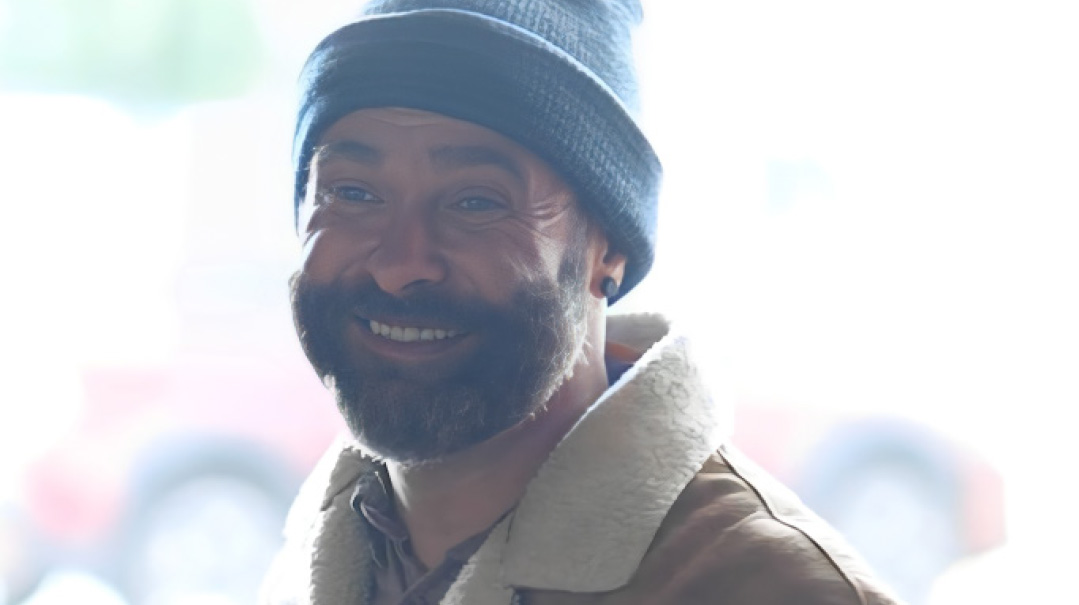
Moshe Niehaus’s innovative casting strategy delivers an actor who seamlessly transitions from a menacing figure in summer to a thoughtful, changed man in winter, solving both narrative and logistical challenges
Authentic Actors
The look and vibe of the actor plays a big part in the authenticity of any video, particularly when it comes to a reenactment. We knew we needed a real tough guy look to play our neo-Nazi. But posting on a casting site that we’re searching for a hoodlum type who hates Jews and other minorities could bring an element we wouldn’t be comfortable with, to say the least.
Moshe Niehaus posted the perfect casting call, highlighting that although we needed the “bad guy” look, the part also called for emotional depth, as the actor would need to have a change of attitude midway through the script. This post weeded out the real riffraff.
The other challenge was that in the original story, the “bad guy” comes back a year later, and he’s changed both externally and internally. It was important to have a shaved head look in the first scenes, but timing restraints didn’t allow us to wait for his hair to grow out for the following scenes.
Moshe came up with an idea that would kill two birds with one stone.
“Why not have the first scene be a summer scene, which gives us a sleeveless look and highlights his tattoos and shaved head, and the second part will be set in winter, so the actor can wear a wool cap and long sleeves? That takes care of both the skinhead issue and the passage of time,” he suggested.
It was the perfect solution.
Tattoos and Tefillin
In the original story, the customer walked into the establishment with an extremely hateful tattoo. This is an important element of the story, because it drives home how angry and bigoted he was. The decision to recreate the tattoo was fairly simple, but the reality of getting it done, not so much.
There are ways to print temporary tattoos, but the vulgar message we needed is actually banned on mainstream platforms. Calling local tattoo parlors didn’t go much smoother.
“Sure we can create temporary tattoos, what do you want? — Excuse me?! Oh no, I can’t do that. That’s terrible! Try someone else.” Explaining that it was for a movie didn’t help, because people wanted to stay far away. It may have helped restore some of our faith in mankind, but we were no closer to solving our issue.
In the end, we had one of our crew draw the tattoo with special body markers across the length of his entire arm; he actually did a very artistic job. Fast-forward to the end of the shoot, when we were winding down and shooting the breeze with our actor.
“You know, my mom was Jewish,” said our skinhead friend with the hateful tattoo emblazoned on his right arm. Naturally, everyone on the set oohed and ahhed at the irony.
Of course, Dan, our kiddush Hashem-making storeowner, didn’t just see an unbelievable twist, but rather another opportunity. He immediately asked the actor if he would be comfortable donning tefillin, and when he acquiesced, Dan’s son Isaac brought out a pair and began wrapping it around the actor’s left arm, yes, directly across from the “Kill all Jews” tattoo on his opposite arm.
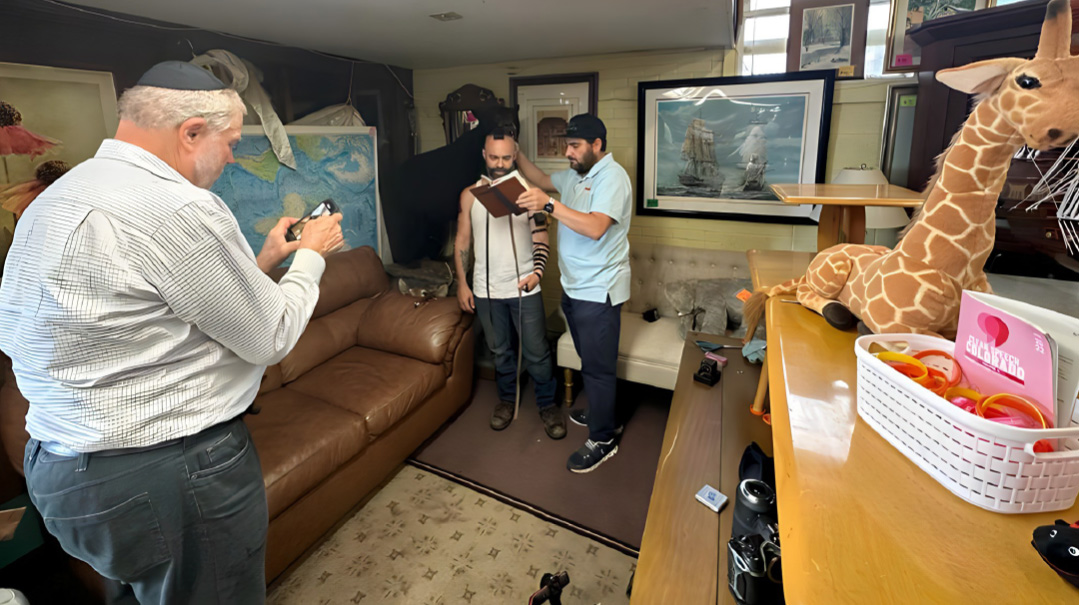
On set, an actor playing a neo-Nazi reveals he’s Jewish and agrees to don tefillin, creating a striking contrast with the hateful tattoo on his arm
Cut ‘n Paste
Powerful story, great footage, all set, right? Almost. To properly make this six-minute video piece, we filmed two hours of footage, both acting scenes and sit-down interviews, to give our editing department the freedom to cherry-pick the best selections.
I tasked video editor Mrs. Devorah Loeb with what we call “building” the story. Though the re-enactment had a clear storyline, the editor’s job is to pay close attention to every sentence or scene, whittling it down until only the best and most relevant content remains. Video production is a form of storytelling, and there are always multiple ways to tell a story, which parts to focus on, which detail to leave out, and so on. It can be tough to cut things out, but it’s always better to leave the viewer wishing for more than to risk dragging out a piece.
Callback
One of the perks of my line of work is that I can bring home sneak peeks of productions in progress for my family. I had shown my children a first draft of the Denver story one Friday afternoon. They were entertained, and later in the day I realized they had absorbed the message as well.
My 11-year-old daughter told me in passing that the mailman had just come, and because it was an August scorcher, she immediately offered him a cold water bottle. She didn’t reference the video she had watched a few hours ago, but the connection was obvious to me.
It’s unbelievable to think that the actions of a man in Denver 30 years prior could have an impact on a young girl today, but there you have it. It’s one of the reasons I love what I do: helping spread positive messages and creating lasting impact.
(Originally featured in Mishpacha, Issue 977)
Oops! We could not locate your form.

